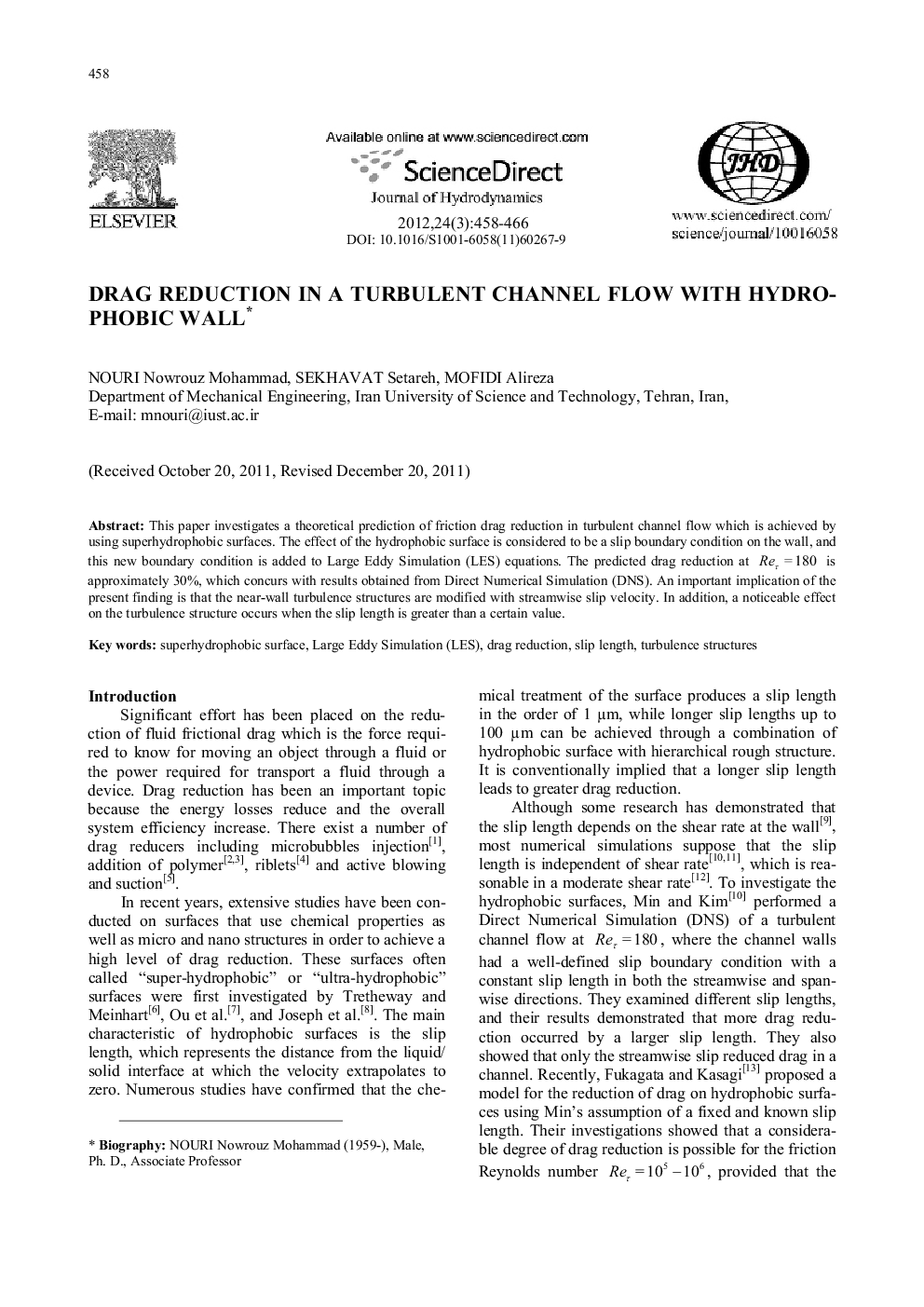| Article ID | Journal | Published Year | Pages | File Type |
|---|---|---|---|---|
| 1722505 | Journal of Hydrodynamics, Ser. B | 2012 | 9 Pages |
Abstract
This paper investigates a theoretical prediction of friction drag reduction in turbulent channel flow which is achieved by using superhydrophobic surfaces. The effect of the hydrophobic surface is considered to be a slip boundary condition on the wall, and this new boundary condition is added to Large Eddy Simulation (LES) equations. The predicted drag reduction at Reτ = 180 is approximately 30%, which concurs with results obtained from Direct Numerical Simulation (DNS). An important implication of the present finding is that the near-wall turbulence structures are modified with streamwise slip velocity. In addition, a noticeable effect on the turbulence structure occurs when the slip length is greater than a certain value.
Related Topics
Physical Sciences and Engineering
Engineering
Ocean Engineering
